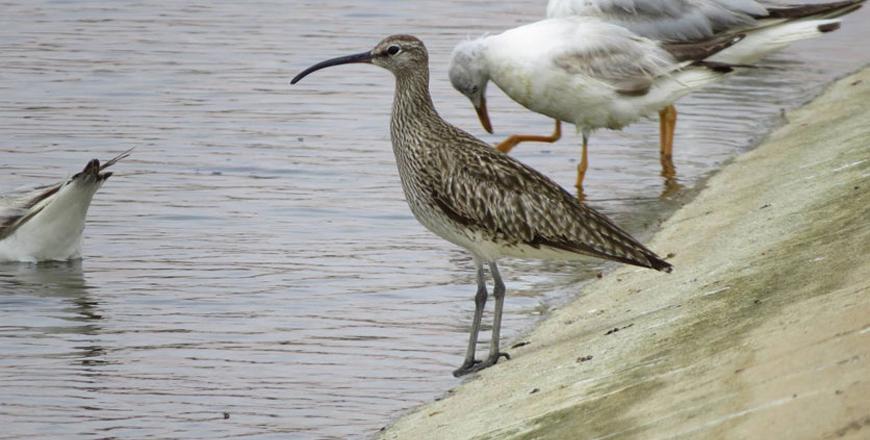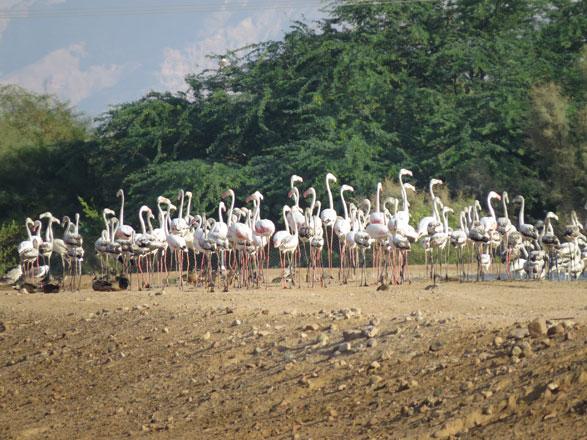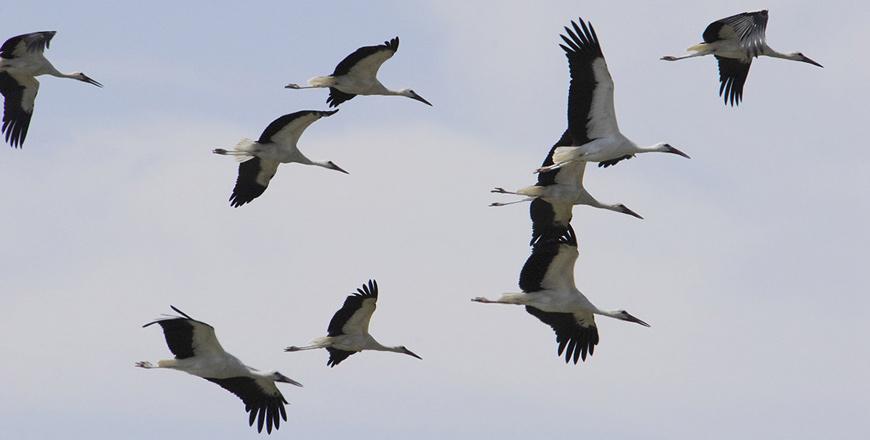You are here
Aqaba Bird Observatory registers some 150 species during spring migration season
By Hana Namrouqa - Jun 01,2015 - Last updated at Jun 01,2015

The whimbrel is among the rare birds sighted in Aqaba during the spring migration season and registered in Jordan (Photo courtesy of ABO Facebook page)
AMMAN — The Aqaba Bird Observatory (ABO) registered over 147 species of migratory birds during the spring migration season, many of which are locally and globally vulnerable, ABO Director Feras Rahahleh said on Monday.
Migratory birds return to their breeding areas in Europe from the southern hemisphere during the spring migration season, which started in February and recently ended, Rahahleh added.
Several rare bird species were registered for the first time in Jordan, while many others have been sighted in the Kingdom after an absence of over two decades, according to ABO.
The ABO registered the crested honey buzzard, a bird of prey, for the first time in the country, Rahahleh said.
He noted that the observatory also recorded three rare bird species — the whimbrel, the little tern and the turnstone, which was sighted for the second consecutive year.
The turnstone is rarely seen in Jordan and was last spotted in 1985, according to the ABO Facebook page, which indicated that the observatory recorded the migratory bird twice this season — in April and May.
“The whimbrel was also recorded twice this season, which is a good indicator of the efficiency of ABO’s habitats in attracting migratory bird species,” Rahahleh told The Jordan Times.
The development of the observatory’s habitats is attracting more migratory birds to stop and rest, with an estimated 25,000 different species stopping over at ABO during the spring season, he said.
Located north of Aqaba, the observatory is spread over a 0.5 square kilometre area and serves as a station for birdwatchers from around the world, particularly since the port city is located on the Rift Valley-Red Sea route, which is the world’s second most-used flyway.
A total of 37 types of migratory soaring birds maintain flight by using rising air currents, annually travelling on the flyway. At least five of these species are globally endangered, such as white and black storks, buzzards, eagles and vultures, according to the Royal Society for the Conservation of Nature (RSCN).
Migratory birds in the southern hemisphere use the Rift Valley/Red Sea Flyway to return to Europe and the northern hemisphere in the spring. On their journey, more than 1.5 million birds stopover in places like the Jordan Valley to rest and drink water.
The ABO is owned and supported by the Aqaba Special Economic Zone Authority, according to Rahahleh.
Noting that the RSCN took over the management of the site in 2012 when the number of visitors stood at 400, he said the figure rose to 7,600 visitors in 2014, the majority of whom were students and residents of Aqaba.
A 0.3 square kilometre area in the observatory contains wetlands that use treated wastewater supplied by the Aqaba Water Company, which assists ABO in emptying the sandy ponds, carrying out maintenance and refilling them before the start of the autumn migration season in September, Rahahleh added.
Related Articles
AMMAN — An increasing number of rare migratory birds is being registered in Aqaba, according to a conservationist, who noted that the Aqaba
AMMAN — Bird observers are having the chance to experience watching flamingos up-close as they pick their meal from seawater at the Aqaba Bi
AMMAN — The Royal Society for the Conservation of Nature (RSCN) on Wednesday announced the beginning of the autumn bird migration season, no


















